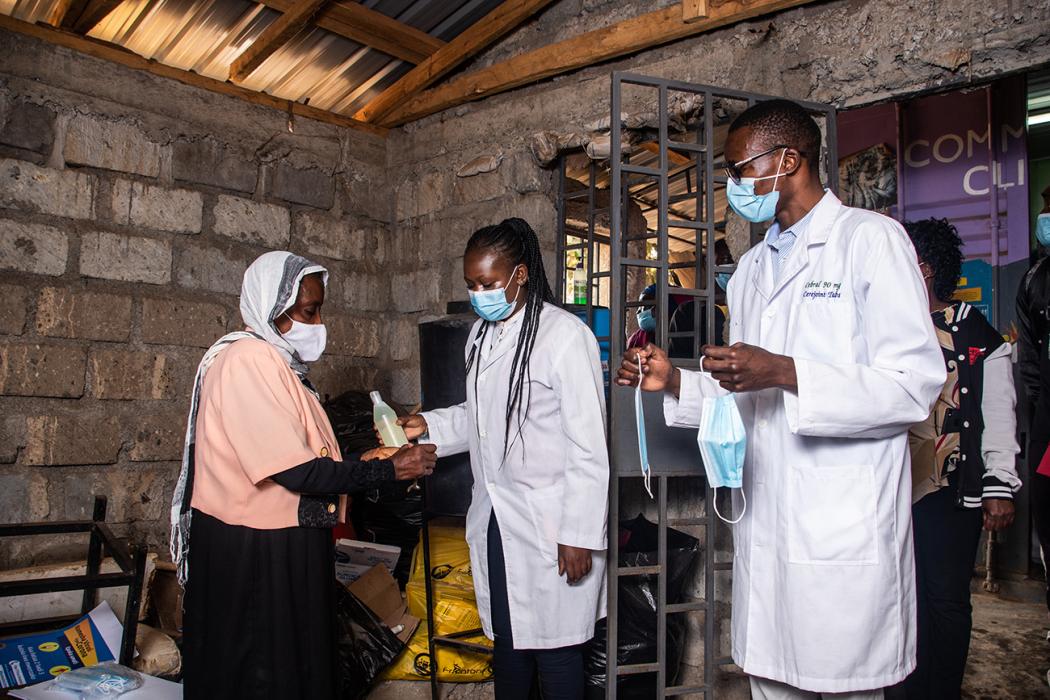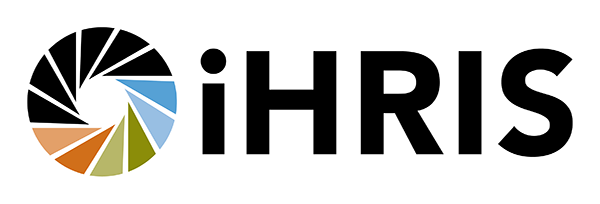A New Generation of Health Workers Enters a Stronger Health System in Kenya

As part of Kenya’s overarching efforts to build and strengthen its health workforce, the country has provided much-needed financial aid to train more than 40,000 aspiring health workers in the past five years. This is just one way the country is addressing its shortage of health workers and using strategic data to address HIV, COVID-19, and other urgent health challenges.
Since 2016, IntraHealth International’s USAID-funded Human Resources for Health (HRH) Kenya Mechanism has partnered with the government of Kenya to build stronger human resource systems, data-use methods, and training programs. Over the past five years, the project:
- Provided 40,257 students with $30.6 million in financial aid through the Afya Elimu Fund.
- Tracked 69,000 health workers' personnel records through iHRIS, which the Kenya Ministry of Health has now adopted.
- Established work councils in 25 counties for regular engagement between trade unions and health leaders to help prevent strikes and improve collaboration.
“You can’t have health care without health workers,” says Janet Muriuki, IntraHealth’s Kenya country director. “We need nurses, midwives, and community health workers ready and deployed, which is why the Kenya HRH project has been so critical recruiting, educating, training, and retaining health workers for better health care in Kenya.”
Training
One of the project’s key approaches to strengthen the country’s health workforce is training. The project has partnered with medical training institutions to improve the quality of preservice and in-service training and to make it accessible to more aspiring health workers.
In 2013, IntraHealth and our partners established the Afya Elimu Fund, which provides low-interest student loans to health care trainees. HRH Kenya gradually transitioned the program to the Higher Education Loans Board, which now continues to administer the funds as an affordable, revolving loan program, putting repayments back into the fund to support new trainees.
HRH Kenya helped develop training and accreditation standards and standardized the core curricula for key cadres of health workers, such as nurses, laboratory technicians, and clinical officers, in collaboration with health regulatory boards and councils, the Commission for University Education, the Technical and Vocational Education and Training Authority, and training institutions.
And when COVID-19 spread around the world, HRH Kenya quickly trained 1,000 new health workers on disease surveillance, infection prevention, triage, and COVID-19 case management.
Read more:
- Improving the Quality and Accessibility of Medical Training to Increase Health Workforce Numbers to Meet Universal Health Coverage Needs
- Promoting County Training Needs Assessments for Effective Human Resources for Health Capacity Development in Kenya
- Building a Sustainable Financial Resource Base to Support Health Workforce Training Toward Universal Health Coverage
- Improving Leadership, Management, and Governance of the Health Workforce in Kenya’s Devolved System
Government partnership
HRH Kenya works with Kenyan counties to prioritize human resources management, including providing technical assistance, mentorship, coaching, and HRH budgeting tools. This has helped county health management teams and health facilities communicate better with national and county governments and allowed them attract, recruit, and deploy health workers.
As part of this county dialogue, we established work councils in 25 counties in Kenya and provided training on leadership, management, and governance for 96 national and county health sector union leaders. The result is stronger employer-worker and employer-union relations. This avoids, mitigates, and resolves health worker strikes and ensures continuity in health care, especially for HIV, family planning, and reproductive, maternal, newborn, and child health.
Through the work councils, issues affecting health workers—such as delayed salary payments, poor working conditions, and stalled career progression—have been resolved diplomatically, resulting in well placed, skilled health workers who remain available and ready to deliver health services without disruption. The work councils have created new and better channels of communication, allowing greater discussion about the challenges health workers face and joint resolutions to address them.
Now, all parties work together to improve health services in counties and there are channels to help identify and address emerging challenges in a timely manner, thereby averting industrial unrest and strikes.
Read more:
- Averting Public Health Sector Industrial Unrest in Kenya: Establishing Stakeholder Work Councils to Foster Harmonious Labor Relations
- Establishing Human Resources for Health Units to Strengthen Health Workforce Management in Kenya’s Counties
Data
The HRH Kenya project integrated iHRIS—IntraHealth’s health workforce information system that enables the Ministry of Health and counties to design and manage a comprehensive human resources strategy—in 37 counties and established technical working groups in 19 counties to help institutionalize the system.
The project developed guidelines on how to implement and use iHRIS and trained trainers and mentors to collect, analyze, manage, and use data for decision-making. iHRIS now helps the Ministry of Health track, manage, deploy, and map the health workforce, a crucial need during COVID-19.
Read more:
- Optimizing Data Use for Effective Decision-Making in Managing Kenya’s Health Workforce
- Strengthening Data for Decision-Making in Human Resources for Health Management Through Systems Interoperability
The Human Resources for Health (HRH) Kenya Mechanism is a five-year project funded by the US Agency for International Development (USAID) to strengthen health professional training programs and health workforce management systems throughout Kenya to help the country improve the health of its citizens.
